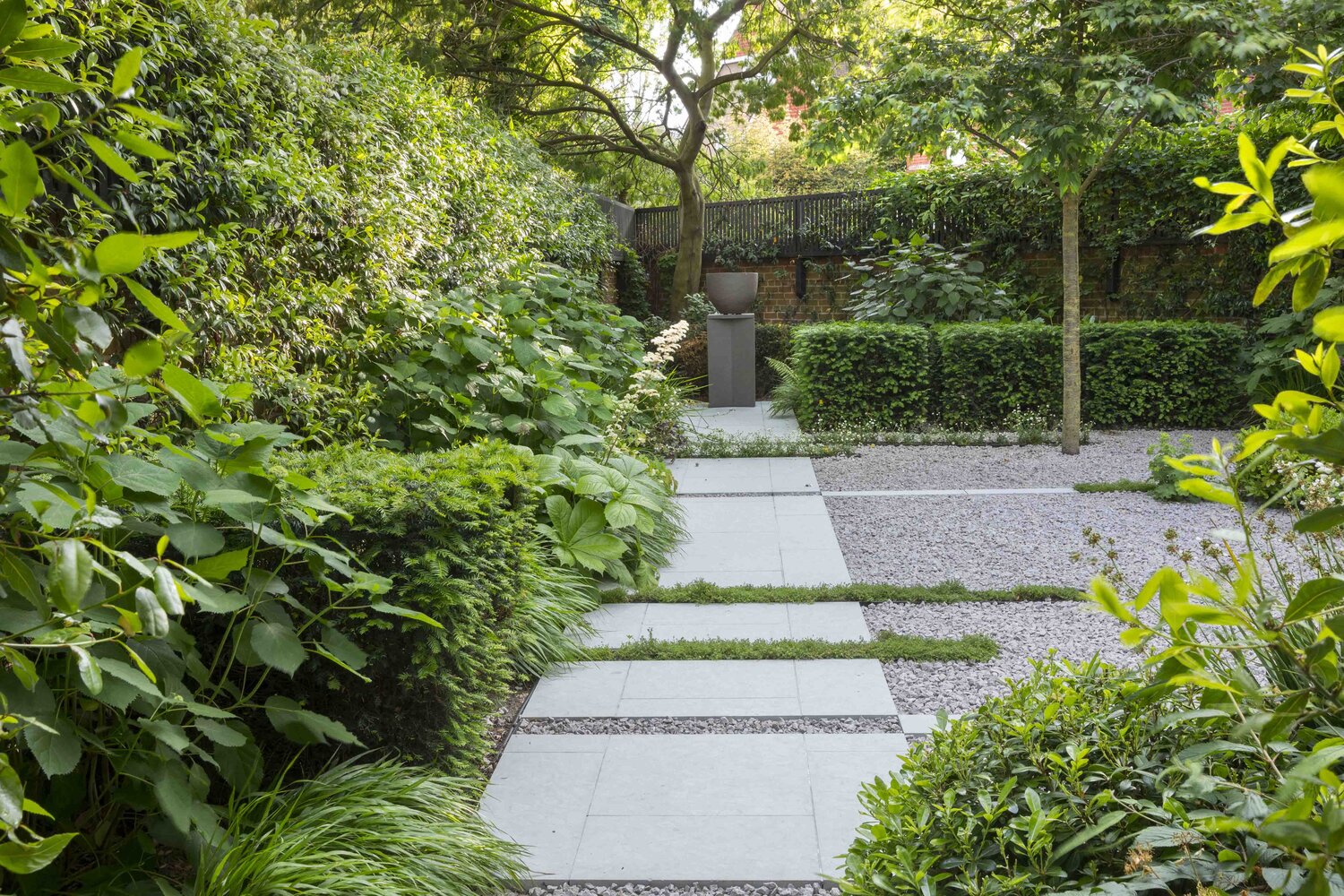Garden trends - patchwork terraces

Large expanses of stone or porcelain paving or terracing have their place of course, but there’s a movement in garden design towards a softer combination of hard landscaping and planting. Garden designers are coming up with inventive solutions to break up hardscaping with pockets of planting to create a softer feel.
This relaxed effect can be achieved in various ways. A simple approach is to remove one or two pavers in a patio to create a mini planting bed of low growing plants such as a block of tiarella, Alchemilla mollis or a mound of Muehlenbeckia. The edges of a patio can also be staggered to allow the planting to come onto the patio at various points.
Another option is to use large pavers to create enough hard surface for furniture, while leaving slim gaps between them for planting instead of grouting. These strips can be planted up with low growing spreading plants such as Ophiopogon or Irish moss (Sagina subulata) to neatly carpet the spaces. Alternatively, the gaps can be filled with gravel dotted with plants such as thyme or Erigeron. This works particularly well for gathering areas further down the garden, where you might want a more natural green feel.
Another way of breaking up hard landscaping and paths is to use planting rills: long thin strips of low growing plants that cut across paths or patios to break up expanses of paving. The designer Charlotte Rowe has been using this technique in her designs for some time, where these elegant strips of green cut through smooth stone patios and across paths in staggered lengths, giving the clean geometric shapes of her designs an extra interest. These can be filled with sweet woodruff, (Gallium odoratum) or mind-your-own-business (Soleirolia soleirolia) in the shade, or creeping thyme (Thymus erpyllum) in the sun.
The effect of this new intermingling of hard and soft landscaping opens up a whole range of different design options. And as well as being softer on the eye, it’s also a way to increase your plant count and is better for the environment, providing a permeable surface without the problem of water run-off, as rain water can instead sink into the soil.







